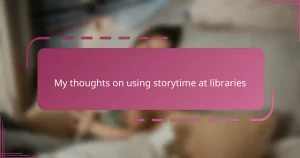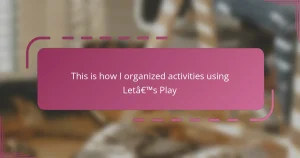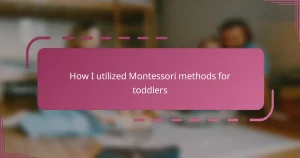Key takeaways
- Creativity in parenting transforms challenges into opportunities for connection and growth, emphasizing the importance of perspective.
- Choosing the right Crayola products enhances children’s creativity by matching their interests and abilities, encouraging exploration.
- Setting up a dedicated creative space fosters artistic expression, making creativity an everyday and accessible part of family life.
- Encouraging free expression and celebrating the creative process nurtures children’s ownership and joy in their artistic endeavors.
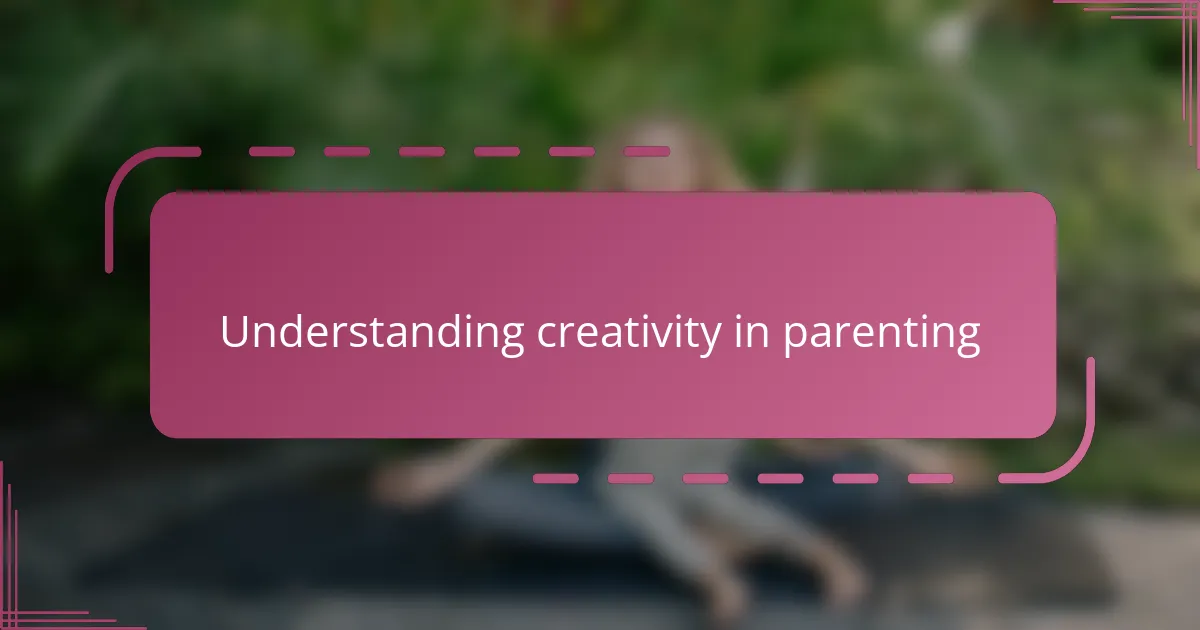
Understanding creativity in parenting
Creativity in parenting isn’t just about arts and crafts; it’s a mindset that helps us solve daily challenges in unique ways. I’ve found that when I approach parenting creatively, moments that once felt chaotic transform into opportunities for connection and growth. Have you ever noticed how a simple change in perspective can turn a tantrum into a chance for teaching patience and understanding?
From my experience, nurturing creativity means allowing space for both kids and parents to explore without fear of mistakes. When my children use Crayola products to express themselves freely, I see their confidence bloom, and I realize creativity is as much about freedom as it is about imagination. Doesn’t it feel rewarding to watch your child’s personality emerge through their colorful creations?
Understanding creativity also means recognizing that it evolves constantly, just like our children do. Parenting is not a fixed script but a dynamic journey where improvisation becomes our greatest tool. I often reflect on how embracing this fluidity has deepened my bond with my kids—what if creativity in parenting is really about growing and learning together every day?
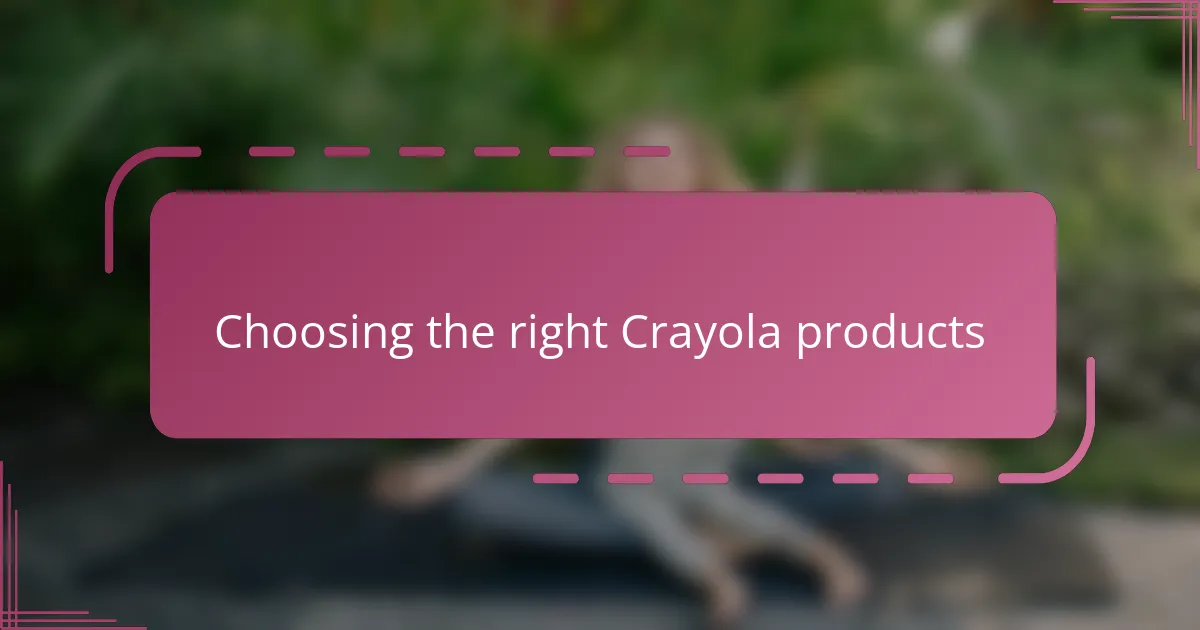
Choosing the right Crayola products
Choosing the right Crayola products is more than just picking the brightest colors; it’s about matching tools to my kids’ interests and ages. For example, I noticed my youngest had trouble gripping thin crayons, so switching to Crayola’s thicker crayons made all the difference in her ability to express herself comfortably.
I’ve also learned the value of variety. When I introduced markers and colored pencils alongside crayons, my children’s creativity noticeably expanded—they experimented with new textures and techniques. Doesn’t giving kids new materials open up worlds of possibility?
Sometimes, I reflect on how selecting the perfect product feels like choosing the right language for their imagination. Have you ever seen a child’s face light up when they realize a certain tool makes their ideas come alive more easily? That moment of discovery is priceless, and Crayola has been a wonderful partner in those experiences.
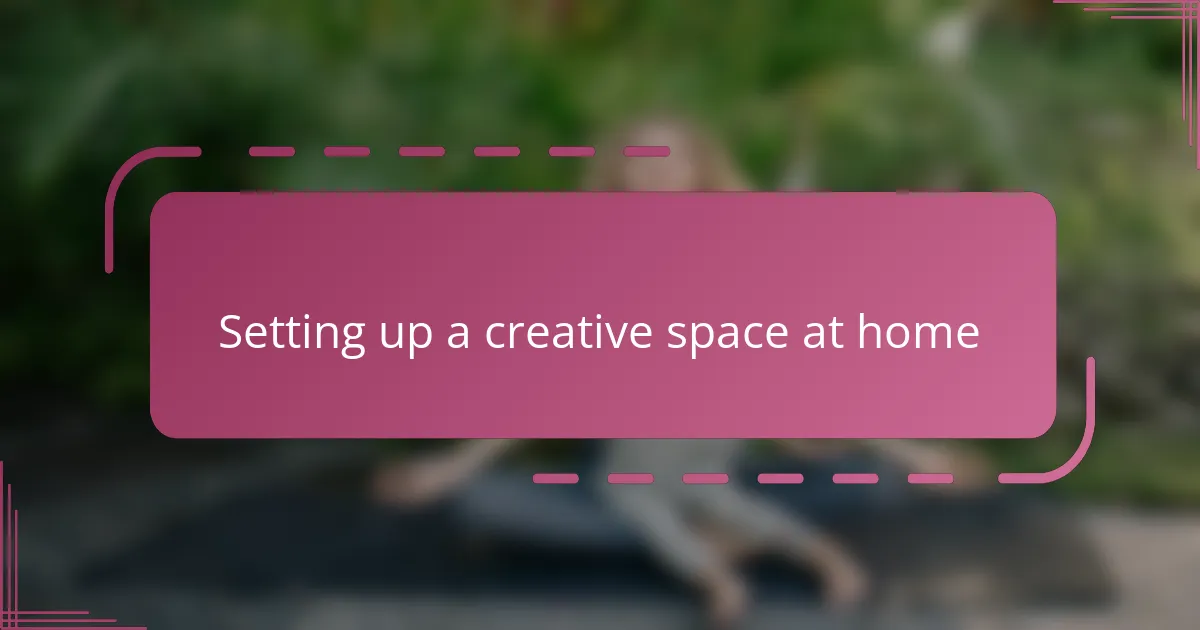
Setting up a creative space at home
Creating a dedicated creative space at home was a game changer for us. I cleared a small corner with an adjustable table and a few shelves where all the Crayola products—crayons, markers, and paper—are always within reach. Having everything organized yet inviting made it easier for my kids to dive into their projects whenever inspiration struck.
I noticed that when the space felt cozy and personal, my children seemed more eager to explore their ideas without hesitation. Do you think your child would feel more confident if their creative tools were in a spot just for them? Setting up a place where messes are welcomed and mistakes are part of the fun really encouraged their artistic freedom.
What surprised me most was how this simple setup became a sanctuary for our family’s creativity. We’d gather there to brainstorm, doodle, or just talk about our day with colorful drawings as backdrops. Isn’t it amazing how a little space filled with crayons and imagination can bring everyone closer together?
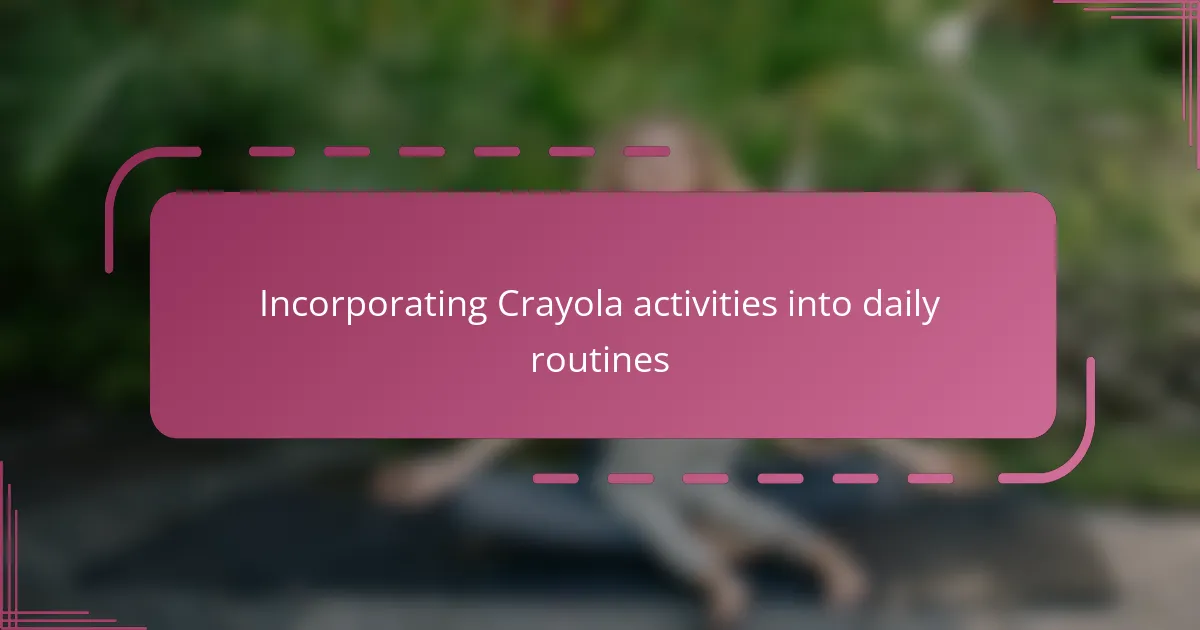
Incorporating Crayola activities into daily routines
Incorporating Crayola activities into our daily routines quickly became one of my favorite ways to bring creative moments into everyday life. I started by weaving short coloring breaks into homework time or snack preparation, turning what could be dull transitions into fun opportunities for expression. Have you ever tried suggesting a quick doodle between tasks? It amazed me how those small bursts of creativity helped my kids reset and refocus.
Some days, I’d casually leave a fresh sheet of paper and a box of Crayola crayons on the kitchen table, almost like an invitation. It was surprising how often my children would spontaneously sit down to draw while I cooked or unpacked groceries. That simple gesture turned ordinary moments into chances for unexpected art and conversation—have you noticed how creativity can sneak in when you least expect it?
What really stuck with me, though, was how these tiny daily practices made creativity feel natural, not extra. Instead of waiting for the weekend or a big project, we embraced creativity as part of our daily rhythm. Doesn’t it feel powerful to make art as casual and accessible as putting on a pair of shoes? Those little habits have been my secret to keeping imagination alive every day.

Encouraging free expression with coloring
When I encourage my children to color without strict rules or expectations, I see them really open up. It’s fascinating how they choose colors that surprise me—sometimes wildly unconventional combinations that somehow just work. Have you ever noticed how giving kids the freedom to pick their own colors sparks a deeper sense of ownership in their work?
I remember one afternoon when my daughter layered vibrant blues and greens with no particular pattern, just pure enjoyment. Instead of guiding her toward “realistic” coloring, I stepped back and watched her creativity unfold naturally. That moment reminded me how powerful free expression is—it’s not about the final picture, but the joy of creating without limits.
Encouraging this kind of open-ended coloring has transformed our art time into something unexpected and lively. We don’t just fill in shapes; we explore feelings and stories through the colors they choose. Isn’t it amazing how a simple box of Crayola crayons can become a tool for kids to express their unique inner worlds?

Sharing personal creativity stories
I’ve always found that sharing stories about our creative moments brings a special kind of inspiration. One time, my son proudly showed me a scribbled drawing that, at first glance, seemed chaotic—but as he explained, it was his “adventure map,” full of places he imagined. Have you ever seen your child’s face light up when they share the meaning behind their artwork? Those stories make creativity feel alive and personal.
Sometimes, I use these stories to connect deeper with my kids. For instance, after my daughter told me about the colorful character she invented with Crayola markers, I realized how storytelling and creativity are intertwined in her mind. Doesn’t it make you wonder how many stories we miss when we only focus on the final product rather than the creative journey?
Sharing these personal creativity stories also helps me reflect on my own creative growth as a parent. I recall feeling proud not just of their masterpieces, but of the moments we laughed, brainstormed, and even made a few messes together. Isn’t that what creativity is really about—a shared experience that shapes us all?
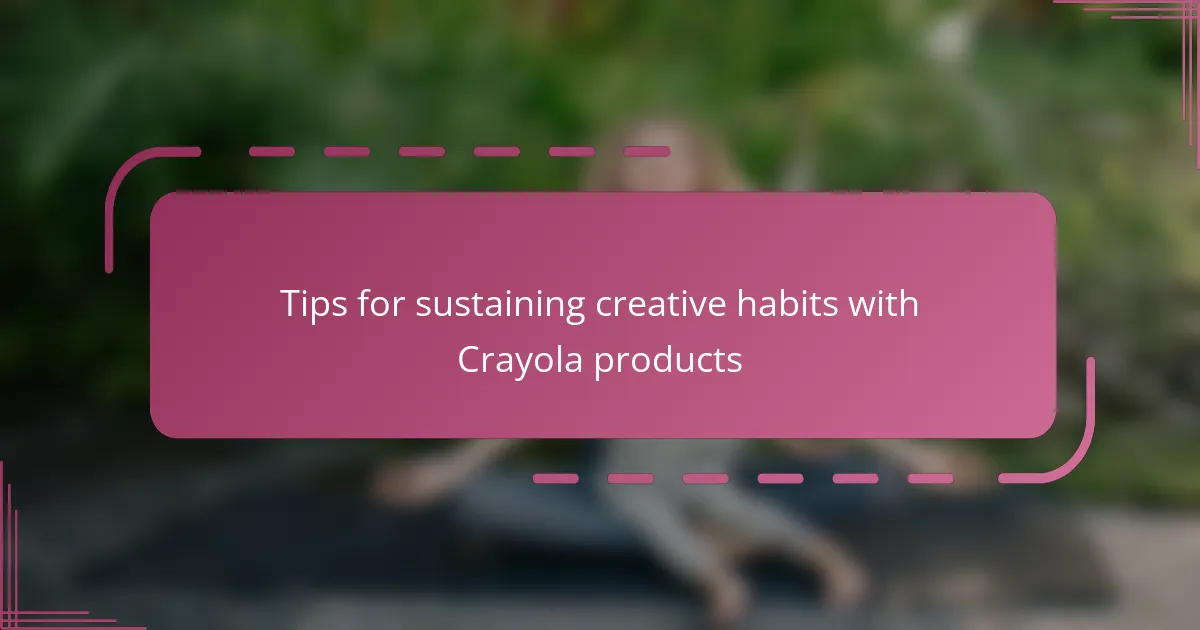
Tips for sustaining creative habits with Crayola products
One tip I swear by is setting small, achievable creative goals with Crayola products—like drawing a simple animal or inventing a new pattern. It’s amazing how these tiny challenges keep my kids eager and proud of their progress, turning creativity into a habit rather than a one-time event. Have you noticed how breaking big ideas into bite-sized pieces sparks more frequent and joyful art sessions?
I also find that rotating Crayola supplies every few weeks breathes fresh life into our creative routine. When markers get swapped for crayons or colored pencils, my children’s imagination suddenly stretches in new directions. This little switch-up prevents boredom and keeps their artistic spark alive—don’t you think variety is the secret ingredient for long-term creativity?
Lastly, I make it a point to celebrate the process, not just the finished work. Praising effort, experimenting, and even colorful messes encourages my kids to take risks with their Crayola creations. It’s heartwarming to see how this mindset helps creativity become a natural, joyful part of our daily lives instead of a pressured task. How often do we remember that creativity thrives on freedom and fun?
